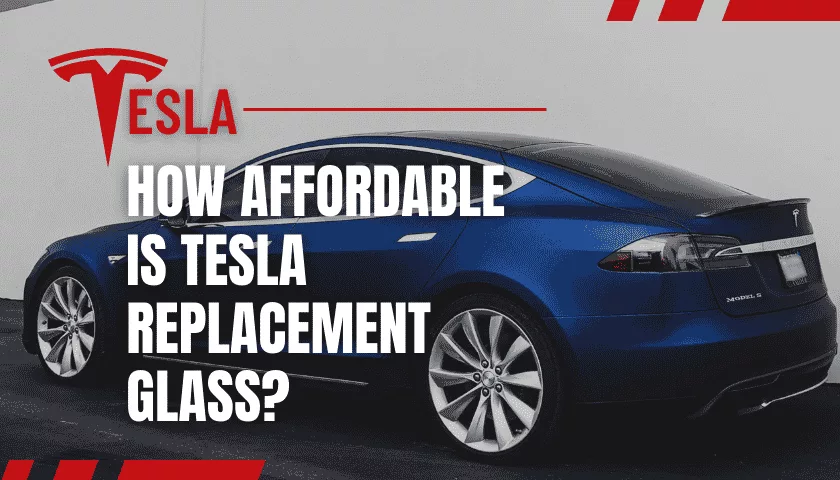
Coupes vs Sedans
So you’re in the market for a new car but not sure if you want to spend money on a coupe or sedan. We wrote this article on coupes vs. sedans to help you understand why one might cost more money than the other.
Inside this article, we’ll cover some of the top features and options for each vehicle type and then discuss the different costs you might incur after buying one. In addition, we’ll give you our best advice on how to save money regardless of which vehicle you purchase.
After reading this article, you should have enough information to decide which vehicle type is the best option to buy.
A Brief History
Which came first? It’s hard to say since automakers created both vehicles roughly the same time. However, talk to a sports car enthusiast, and you might hear that the coupe came before the sedan. So we decided to dig a little and found that sports car enthusiasts might be correct.
In the 1800s, the first automobiles built had no doors and were labeled “coupes” because they looked like the front part of a horse. Eventually, these early cars evolved and included a single entry. Over time, manufacturers began building larger and larger vehicles until they ultimately became the modern-day sedan.
Definitions
- Sedan: These cars are typically four-door passenger automobiles with two rows of seats (usually a 2+2-style rear seat) and a trunk. The body styles generally are longer and broader than those of two-door coupes.
- Coupe: These cars are typically two-door passenger vehicles that sometimes have a third side door for entry to the rear passenger seats. The Mazda RX8 and Hyundai Veloster are a couple of examples of three-door coupes. In addition, the shorter body allows it to fit into smaller parking spaces than a sedan.
Outer Appearance
In the early development of automobiles, it was easy to tell the differences between sedans and coupes. However, more recently, the automotive body styles of sedans have started taking on the same outer appearance as a coupe making it harder to distinguish between them.
Ask anyone to describe the difference, and they’ll quickly let you know it’s all about the number of doors. Most people still describe a coupe as having two doors and a sedan as having four, which is technically accurate. However, some four-door sedans look very similar to their coupe counterpart. For example, look at the following BMW images, and it’s easy to see many similarities.

Average Price Difference
When researching the differences between coupes and sedans, price ranges vary considerably, making it difficult to determine which one is best for your budget.
To get an idea of the average prices for each vehicle type, we pulled data from Edmunds.com and compared the average sedan selling price to the average coupe selling price. Here’s what we determined:
- Average Selling Price of Sedan $35,913
- Average Selling Price of Coupe $33,828
The different amounts listed above show that there isn’t much of a range in price between the two types of vehicles. Even though a coupe may seem cheaper when taking an average range as we did, it doesn’t always mean it will be. There are lots of models priced higher than their sedan counterparts.
So what does this mean? It’s possible to buy either type of car without worrying about spending too much money or blowing your budget.
Top Features & Options For Sedans vs. Coupes

The following are some of the most critical features differentiating the two body types.
- Rear Seat – The coupe’s rear seat tends to be smaller and less comfortable than those in a sedan. So if you plan on taking children or friends with you on long road trips, it’s good to know that they can fit more comfortably into the back seat of a sedan.
- Engine Size – A sedan offers a bigger engine than a coupe, which means that a sedan provides better performance and fuel economy. So if you’re looking for something with power but don’t want to spend a lot of money, then a sedan might be the way to go.
- Trunk / Cargo Space – If you need additional cargo space to store things while driving around town, a sedan will give you lots of cargo space compared to a coupe. You won’t find any coupe models offering anywhere near the trunk space provided by their sedan counterparts.
- Interior Space – Interior space is another essential factor when choosing between a sedan and a coupe. As mentioned earlier, sedans tend to offer more room inside. So when shopping for a new car, make sure to consider this.
Cost of Ownership

The upfront cost of getting into a sedan or coupe isn’t the only thing to consider. You’ll need to consider additional ongoing expenses such as gas, insurance, auto glass, maintenance, and even collision repair. Let’s take a closer look at each of these items below.
Fuel Economy
One of the most significant differences between each vehicle type is how well they perform on the road. As mentioned earlier, sedans typically have larger motors resulting in slightly better fuel economy. The sedan’s average MPG is around 25 miles per gallon but averages around 52 MPG for hybrids. The coupe’s average MPG is approximately 19 miles per gallon but reaches 44 MPG for hybrids.
Insurance Costs
The insurance cost depends on more than the type of vehicle, but a sedan will usually cost you less than a coupe. According to Insure.com, the average annual cost of insuring a sedan is $1,097, whereas the coupe’s average yearly insurance cost is roughly $1,611.
If you have a bad driving record or are under 25, an insurance company will typically charge you more. However, if you’re over 25 years old and have a clean driving history, your rates should be similar to the amounts listed above.
Auto Glass Prices
When it comes to auto glass replacement, you’ll pay about the same price for each piece of glass since the body isn’t too different between each vehicle type. However, sports cars’ small custom side windows cost significantly more than the passenger door glass on a sedan. In addition, the front windshield cost might vary slightly if the frame opening has a different shape between the different body types.
Collision Repair Costs
Collision repair costs vary depending on damage to the exterior body panels and hidden damage found on the subframe after tearing down the vehicle. Unfortunately, there’s no way of knowing which car will cost more to repair since the amount of damage during an accident is never the same.
Even damage caused by a hail storm or door dings caused by other cars in a parking lot will vary in price depending on the number and severity of dents on each body panel. To learn more about the cost of fixing a car with hail damage, check out the article we wrote on hail damage repair costs. You can also check out our paintless dent repair article for more information on the average price of minor repair using PDR.
Routine Maintenance
If you’re planning on keeping your car for a few years, you should consider how much maintenance costs will add up over time. All vehicles require regular oil changes, tire rotations, and other routine maintenance. Below are some of the top maintenance items we recommend to keep your coupe or sedan running smooth and looking good.
- Oil Changes: It’s important to have oil changes every 3,000 to 8,000 miles, depending on your oil. You should never exceed 3,500 miles if your vehicle has traditional oil. However, if you have synthetic oil in your car, experts recommend changing the oil every 6,000 to 8,000 miles. Check out our oil changes article to learn more.
- Tune-Ups: Tune-ups help ensure that all engine parts are working correctly. If there’s any engine problem, it could cause serious problems later. A tune-up includes replacing spark plugs, air filters, fluids, belts, hoses, etc. To look at the benefits and costs of tune-ups, check out our article on automotive tune-ups.
- Tire Rotations: Tires wear down over time due to everyday use and need regularly rotating to prevent them from wearing unevenly. Experts suggest rotating tires after 6,000 miles. However, you might consider rotating the tires sooner if you own a coupe or sports car. The rear tires on a coupe are typically angled to help traction during turns. This angle makes the tires wear faster than those on a sedan. To learn more about this subject, check out our tire rotation article.
- Brake Service: Brakes work hard to stop your car, and over time they can get worn down and become less effective. However, most brakes tend to last between 15,000 and 30,000 miles, depending on driving conditions. You can learn more on this subject in our brake replacements article.
Coupe vs Sedan At a Glance
| Feature | Sedan | Coupe |
| More Passenger Space | YES | NO |
| Better Fuel Economy | YES | NO |
| Better Trunk / Rear Cargo Space | YES | NO |
| More Sporty Appearance | NO | YES |
| Lower Auto Insurance Rates | YES | NO |
| More Seating Capacity | YES | NO |
| Easier to Park in Small Spaces | NO | YES |
| More Competitive Base Price | YES | NO |
| Manual or Automatic Transmission | NO | YES |
FAQ
- Is a convertible considered a coupe or sedan? A convertible is viewed as a coupe because its roof is removable.
- Is a hatchback considered a coupe or sedan? A hatchback is not considered a coupe or a sedan. Most hatchbacks are larger than each of these vehicle classifications and typically classified as small SUVs or crossovers.
- Is a station wagon considered a coupe or sedan? Depending on their size, station wagons are usually large enough to be classified as a sedan. However, similar to a hatchback, a station wagon can also fit into the SUV or crossover classification since it has four doors and a liftgate.
- Do coupes and sedans have all-wheel-drive versions? Yes! Both have front-wheel drive (FWD) and all-wheel drive (AWD) versions. AWD systems allow power to flow to either the front wheels or all four wheels when needed.
- Is all-wheel drive better than rear-wheel-drive? Rear-wheel-drive cars are generally cheaper to buy and maintain but offer less control than AWD models. However, AWD cars are heavier and more expensive to purchase.
- Do all-wheel drive vehicles have better gas mileage than rear-wheel-drive cars? All-wheel-drive cars cost more to buy, and they consume more fuel than rear-wheel-drive and front-wheel-drive cars. However, some manufacturers claim that all-wheel-drive vehicles can achieve up to 5% better fuel economy than rear-wheel drive vehicles.
- Is there a four-door coupe? The BMW 2-series gran coupe and 8-series gran coupe are available in four-door form. The body shape of a gran coupe gives it the same appearance as a sports coupe.
- What other car classifications are there? The classification of cars has evolved over time to include several other categories. Wikipedia has an extensive chart with descriptions
Key Takeaways
- Sedans are 4 door vehicles, but coupes can also come with four doors.
- It typically costs less to buy a sedan, but the price difference isn’t huge.
- Sedans generally have larger engines.
- The average MPG in a Coupe is less than that of a sedan.
- The average insurance rates are lower for sedans.
- The windshield replacement cost is almost the same for each vehicle type.
- Sedans provide more passenger space.
- Rear passenger space is easier to access in a sedan.
- The trunk area is more significant in a sedan.
- Following a routine maintenance schedule will keep your vehicle running smooth and looking great for years.
Final Thoughts
In the end, the decision is yours. Both vehicles typically have an attractive body type with smooth lines and sleek styling. Whether it’s picking one based on looks, price, or practicality, we hope that our comparison helped you decide which model best suits your needs.






